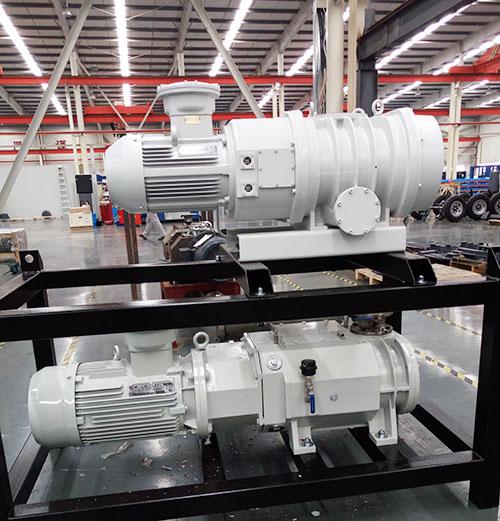Recommendations for vacuum pump selection: 1. The selected vacuum pump must be able to be released during the extraction process. 淼 sodium?濉?/span> 2. The ultimate vacuum of the selected main pump must be higher than the vacuum required by the pumped container. 3. The pumping speed of the main pump must be greater than the maximum bleed air volume during the process. 4. The vacuum pump used must have the working medium and the material of the manufacturing pump to meet the process requirements. 5. For continuous production processes, the vacuum pump selected must be reliable and must meet the needs of continuous production. Vacuum pump selection method: 1. The degree of vacuum achieved by the process The working pressure of the vacuum pump should meet the requirements of the process working pressure. The vacuum degree should be higher than the vacuum of the vacuum equipment by half to one order of magnitude. (For example, the vacuum process requires a vacuum of 100pa (absolute pressure), and the vacuum of the vacuum pump is at least 50pa-10pa). Generally, if the absolute pressure is higher than 3300Pa, the water ring vacuum pump is preferred as the vacuum device. If the absolute pressure requirement is lower than 3300Pa, the water ring vacuum pump cannot be selected, and the rotary vane vacuum pump or the vacuum pump with higher vacuum level is selected as the vacuum. Obtain the device. 2. The amount of pumping required by the process (pumping rate) The vacuum pump requires the pumping rate (that is, the ability of the vacuum pump to discharge gas, liquid, and solids under its working pressure). The general unit is m3/h, L/S, m3/min. The specific calculation method can be calculated by referring to the following formula. Of course, the selection of the vacuum pump is a comprehensive process involving relevant experience and other factors. Pumping rate calculation formula: S=2.303(V/t)Log(P1/P2) among them: S is the vacuum pumping rate (L/s) V is the vacuum chamber volume (L) (m3) t is the time required to reach the required vacuum (s) (h) P1 is the initial vacuum (Torr) (pa) P2 is the required vacuum (Torr) (pa) E.g: V=500L t=30s P1=760Torr P2=50Torr Then: S=2.303V/t Log(P1/P2) =2.303x500/30xLog(760/50) =45.4L/s (163.4m3/h) Of course, the above formula is only a theoretical calculation result, and a number of variable factors are not taken into consideration, such as pipe flow resistance, leakage, flow resistance of the filter, temperature of the gas to be pumped, and the like. In fact, the safety factor should also be taken into account. 3. Determine the composition of the object being pumped 4. Is the object being pumped contaminated with rubber or oil? The corresponding vacuum equipment should be selected for different materials to be pumped. If the gas contains a lot of steam, particles, and corrosive gases, it should be considered in the inlet pipe of the pump. Install appropriate auxiliary equipment such as condensers, filters, etc. on the road. 5. The noise, vibration and aesthetics of the vacuum pump have an impact on the factory. 6, as the saying goes, cheap is not good. When purchasing vacuum pumps and vacuum equipment, priority should also be given to the quality of the equipment, transportation and maintenance and maintenance costs.
MiroChannel Heat Exchanger is normally used in auto mobile , household and commercial AC system. In refrigeration area is intial stage, so we mainly focus on designing condenser & evaporator for this market. Especially for the evaporator , we can produce the evaporator whose joint with the electro-heater together, which better enhance defrosting efficiency.
Microchannel Heat Exchanger Microchannel Heat Exchanger,Parallel Flow Microchannel Heat Exchanger,Refrigerator Microchannel Coil,Folded Microchannel Heat Exchanger Zhejiang Tongxing Technology Co., Ltd. , https://www.txheatexchanger.com